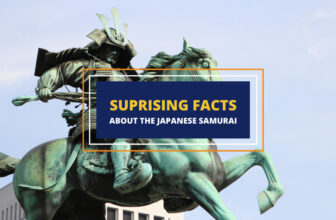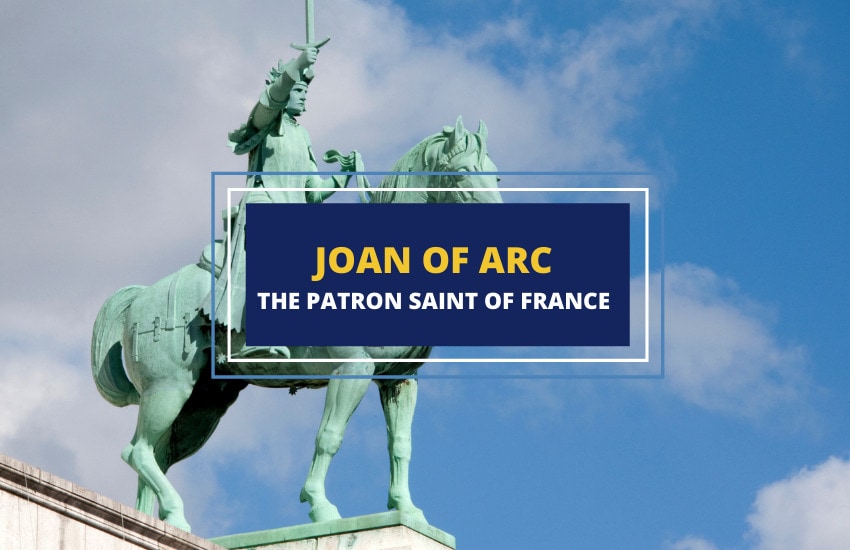
Table of Contents
Joan of Arc is one of the most unexpected heroes in the history of western civilization. To grasp how a young, illiterate farmgirl came to be the patron saint of France and one of the most well-known women to ever live, we have to begin with the historical events into which she entered. Let’s take a closer look at her story.
Who Was Joan of Arc?
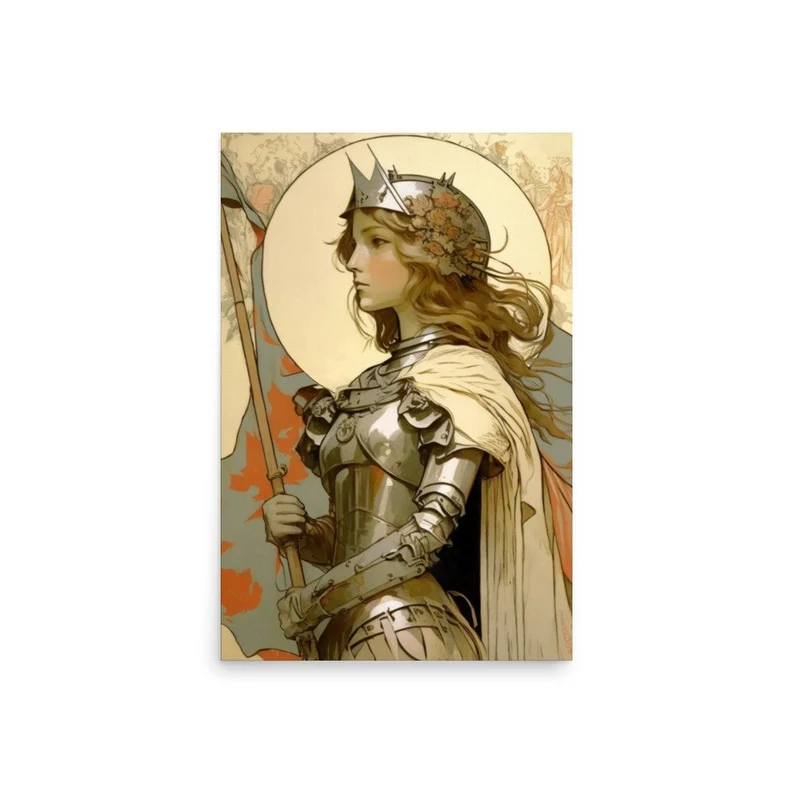
Joan was born in 1412 CE during the Hundred Years’ War. This was an off and on dispute between France and England over the heredity of the ruler of France.
At the time of Joan’s life, much of the north and western parts of France were under the control of England, including Paris. Other parts were controlled by a pro-English French faction known as the Burgundians. Then there were the French loyalists concentrated in the south and east of the country.
For most commoners, this conflict was a far-off dispute among the nobility. Families and villages like the ones Joan came from had little time or interest to invest in the war. It boiled down to little more than a political and legal battle, until Joan of Arc’s rise to prominence.
Early Life and Visions
Joan was born in the small village of Domrémy in northeast France, in an area of French loyalism surrounded by Burgundian-controlled lands. Her father was a farmer and town official. It is believed that Joan was illiterate, as would have been common for girls of her family’s social position at that time.
She claimed to receive her first vision from God at the age of 13 while playing in the garden of her home. In the vision she was visited by Saint Michael the archangel, Saint Catherine, and Saint Margeret, among other angelic beings.
In the vision she was told to drive the English out of France and bring about the coronation of Charles VII, who went by the title Dauphin, or ‘heir to the throne,’ in the city of Reims.
Joan Enters Public Life
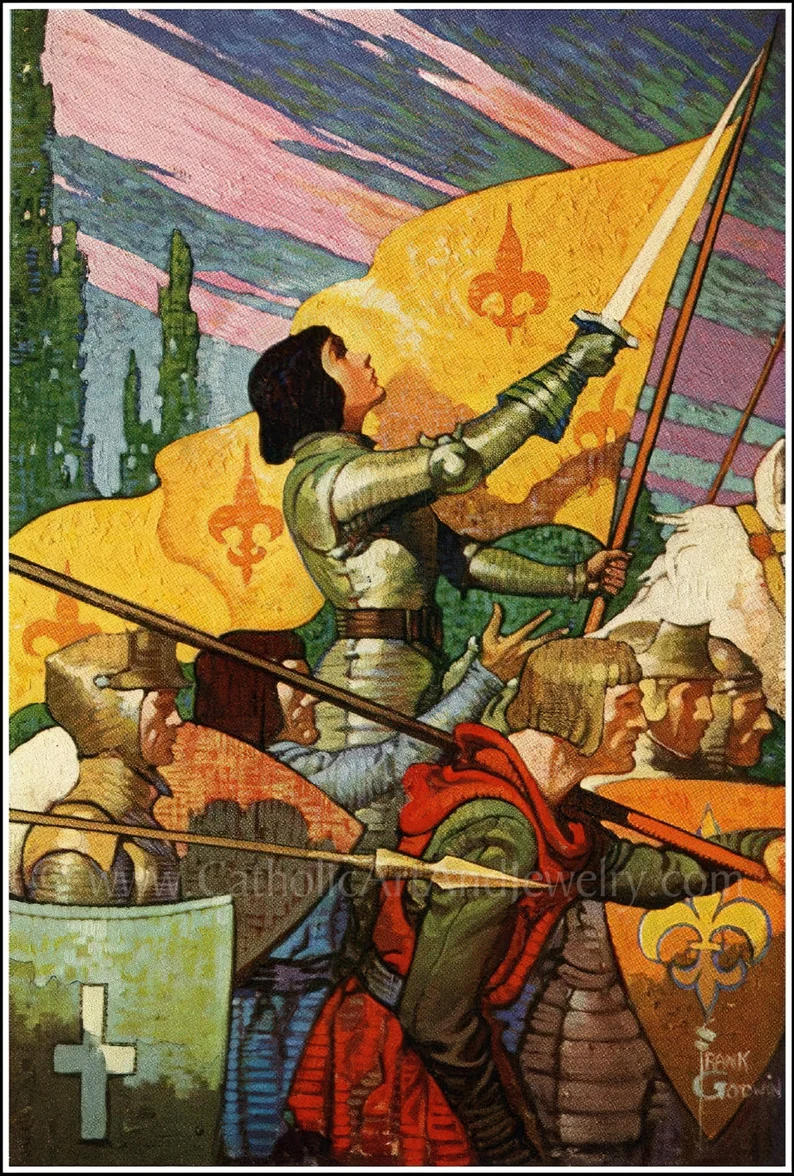
Seeking Audience with the King
When Joan was 16, she traveled through hostile Burgundian territory to a nearby town where she eventually convinced the local garrison commander to grant her an escort to the city of Chinon where the French court was located at the time.
At first, she was rebuffed by the commander. She later returned to make her request again and at that time also offered information concerning the result of a battle near Orleans, the fate of which was still unknown.
When messengers arrived some days later with a report matching the information of French victory spoken by Joan, she was granted the escort under the belief that she had received the information by divine grace. She was dressed in male military clothing and traveled to Chinon to gain audience with Charles.
Boosting French Morale
Her arrival coincided with an extreme low point for the cause of the French loyalists, also known as the Armagnac faction. The city of Orléans was in the midst of a months-long siege by the English army and Charles’ army had managed to win few battles of any consequence for some time.
Joan of Arc changed the tone and tenor of the war by invoking the cause of God with her visions and premonitions. This made a strong impression on the desperate French crown. On the advice of church officials, she was sent to Orléans to test the truthfulness of her divine claims.
Prior to Joan’s arrival in 1429, the French Armagnacs in Orléans had endured five terrible months of siege. Her arrival coincided with a monumental turning of events which saw them undertake their first successful offensive attempt against the English.
A string of successful attacks on English forts soon lifted the siege, providing a sign to prove the legitimacy of Joan’s claims to many military officials. She was hailed as a hero, having been wounded by an arrow during one of the battles.
A French Hero But An English Villain
While Joan became a French hero, she was becoming an English villain. The fact that an illiterate peasant girl could defeat them was interpreted as a clear sign that she was demonic. They were seeking to capture and make something of a spectacle of her.
In the meantime, her military prowess was continuing to show impressive results. She was traveling with the army as an advisor of sorts, offering strategy for battles and the retaking of several critical bridges which proved successful.
Her stature among the French continued to grow. The military success of the army under Joan’s watch led to the retaking of the city of Reims. In July of 1429, just a few months after that first meeting in Chinon, Charles the VII was crowned!
Momentum is Lost and Joan is Captured
Following the coronation, Joan urged a swift assault to retake Paris, yet the nobility persuaded the king to pursue a treaty with the Burgundian faction. The leader of the Burgundians, Duke Phillip, accepted the truce, but used it as a cover to reinforce the English position in Paris.
The delayed assault failed and the momentum which had been built fizzled. After a short truce, common during the Hundred Years’ War, ended, Joan was captured by the English at the siege of Compiègne.
Joan attempted to escape from prison several times including jumping from a seventy-foot tower into a dried moat. The French army also made at least three attempts to rescue her, all of which were unsuccessful.
Joan of Arc is Captured and Put on Trial
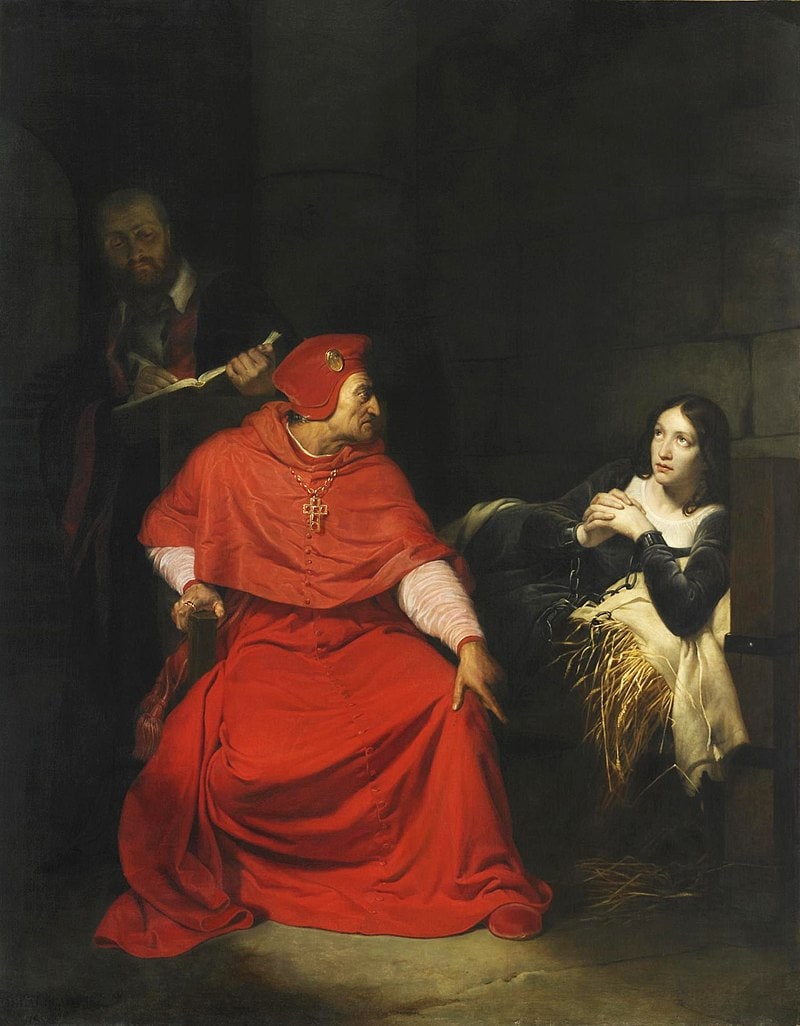
In January of 1431, Joan was put on trial for the charge of heresy. The trial itself was problematic, consisting only of English and Burgundian clerics. Other problems included a lack of any evidence of her having committed heresy and that the trial took place outside the jurisdiction of the presiding bishop.
The court sought to trap Joan in heresy through a series of theologically twisting questions. The most dangerous question she was asked was:
“Do you believe that you’re under God’s grace?“
A ‘yes’ answer was heretical, because medieval theology taught that no one could be certain of God’s grace. A ‘no’ would amount to admission of guilt. But Joan proved yet again that she was up to the task. Her ability to answer once again baffled leaders when she replied, “If I am not, may God put me there; and if I am, may God so keep me.” This was understanding far beyond the expectations for a young, illiterate woman.
The trial’s conclusion was just as problematic as the proceedings. The lack of substantial evidence led to a trumped up finding and many who were present later espoused the belief that the court records had been falsified.
Those records concluded that Joan was guilty of treason, but that she recanted much of what she was convicted of by signing an admission paper. The belief was that she could not have rightly understood exactly what she was signing due to her illiteracy.
However, she was not condemned to die since, under ecclesiastic law, one must be convicted twice of heresy in order to be executed. This infuriated the English, and led to an even greater hoax, the charge of cross-dressing.
Cross-Dressing – A Crime of Heresy
At the time, cross-dressing was viewed as heresy, but according to medieval law, the context of the situation had to be taken into account. If the clothing was in some way offering protection or worn out of necessity, then it was permissible. Both were true in Joan’s case. She wore military uniforms to protect herself during dangerous travel. It also inhibited rape during her time in prison.
At the same time, she was trapped into it when guards stole her dress, forcing her to put on men’s clothing. She was convicted under these spurious charges of a second crime of heresy and sentenced to death.
On the 30th of May, 143, at the age of 19, Joan of Arc was tied to a stake in Rouen and burned. According to eyewitness accounts she had requested a crucifix placed before her which she gazed at intently while crying, “Jesus, Jesus, Jesus.”
After death, her remains were burned two more times until reduced to ash and thrown in the Seine. This was to prevent claims of her escape and the collection of relics.
What Happened After Her Death
The Hundred Years’ War went on for 22 more years before the French finally gained victory and was freed from English influence. Soon after, an inquiry into the trial of Joan of Arc was begun by the church. With the input of clergy throughout Europe, she was eventually exonerated and declared innocent in July 7, 1456, twenty-five years after her death.
By this time, she had already become a French hero and folk saint of French national identity. She was an important figure for the Catholic League during the Protestant Reformation of the 16th century for her zealous support of the Catholic Church.
During the French Revolution her popularity waned because of her support for the French crown and nobility which was not a popular view at that time. It was not until the time of Napoleon that her profile rose back to prominence. Napoleon saw in Joan of Arc an opportunity to rally around French national identity.
In 1869, during the celebration of the 440th anniversary of the siege of Orléans, Joan’s greatest triumph, a petition was submitted for her canonization by the Catholic Church. Sainthood was finally bestowed upon her in 1920 by Pope Benedict XV.
Joan of Arc’s Legacy
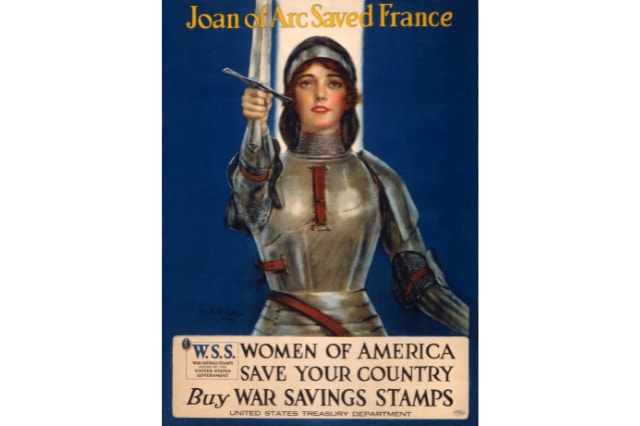
to encourage people to buy War Saving Stamps.
The legacy of Joan of Arc is pervasive and widespread and is eagerly claimed by many different groups of people. She is a symbol of French nationalism to many because of her willingness to fight for her country.
Joan of Arc has also become an early figure in the cause of feminism, being one of the women ‘behaving badly’ who made history. She went outside of the defined roles of women in her day, asserted herself and made a difference in her world.
She is also an example to many of what might be termed common exceptionalism, the idea that exceptional people can come from any background or walk of life. She was, after all, an illiterate peasant girl from the country.
Joan of Arc is also seen as an example to traditional Catholics. Many who have supported the Catholic Church against outside influence, including modernization under Vatican Two, have looked to Joan for inspiration.
Wrapping Up
No matter how one views her motivations and the source of her inspiration, Joan is clearly one of the most compelling people in all of history. She continues to be an inspiration politically, culturally, and spiritually for many.





